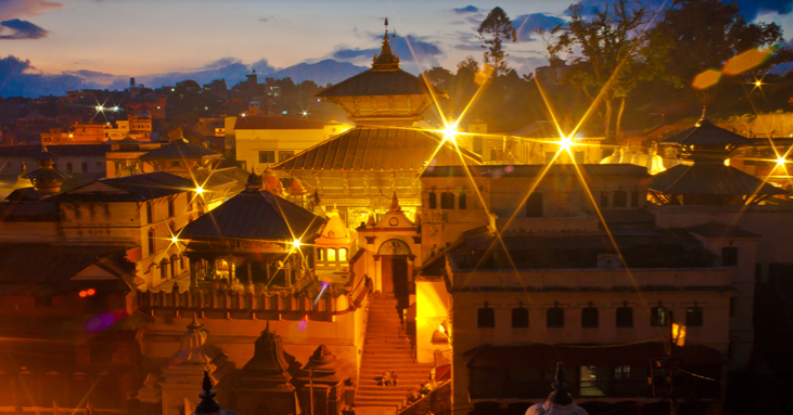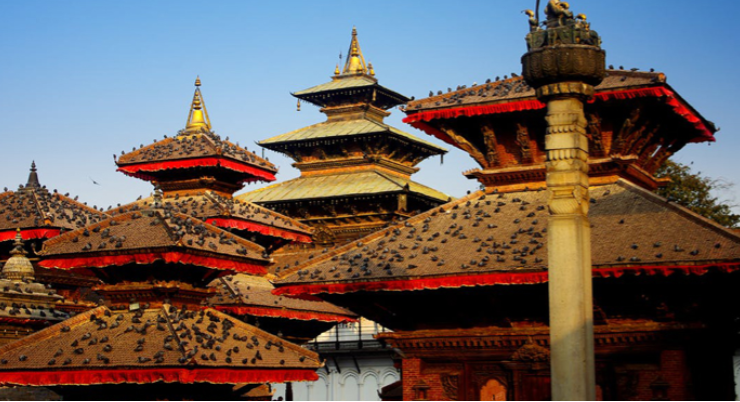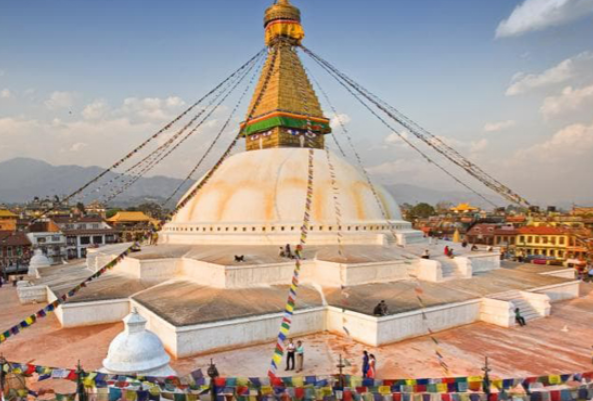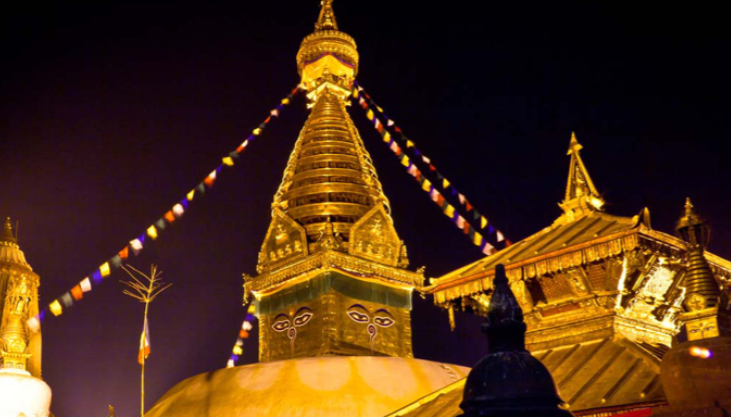Kathmandu, the federal capital of Nepal, is a major destination not only for administrative work, business, education, and health but also for sightseeing. There are many destinations to visit in Kathmandu Valley. On top of that, as Kathmandu is a city full of its own culture, lifestyle, climate, and location, first-time domestic or foreign tourists should set aside at least one week to familiarize themselves with the food and specialties here. Today we are suggesting the 20 best places to visit Kathmandu.
1. Pasupatinath

The Pasupatinath Temple, one of the most revered Hindu shrines in Nepal, is recognized as a UNESCO World Heritage Site and serves as a Shaktipeetha. The complex comprises 518 smaller temples alongside a principal pagoda structure. Access to the temple grounds is restricted to Hindus only. It is believed that the Jyotirlinga within the pasupatinath Temple represents the head of a divine body formed by the twelve Jyotirlingas located in India.
Situated on both banks of the sacred Bagmati River, which flows gracefully on the eastern outskirts of Kathmandu, this splendid sanctum dedicated to Lord Shiva attracts thousands of worshippers who come to offer their prayers and seek his blessings. In 1979, this remarkable temple was designated as a UNESCO World Heritage Site.
The principal festival celebrated at this location is Shivaratri, known as ‘the Night of Lord Shiva,’ which commemorates the night of Lord Shiva’s self-manifestation. On this occasion, devotees and pilgrims from various regions of Nepal and India, including sadhus—holy men often seen with minimal clothing, long hair, and ash smeared on their bodies—and ascetics, gather at the temple to seek a darshan (view) of the revered Shiva lingam.
Another significant event that attracts large crowds to the temple is Teej, a festival exclusively celebrated by Hindu women, which occurs in mid-September. During this time, the entire temple complex and surrounding areas are transformed into a vibrant sea of red, as women adorned in traditional bridal red sarees and yellow or green bead necklaces offer prayers for the health, prosperity, and longevity of their husbands. The temple also experiences considerable attendance every fortnight on the 11th day of the lunar month, known as Ekadashi. Among the various Ekadashis, the two most significant are Harishayani Ekadashi in Ashadh (June/July) and Haribodhini Ekadashi in Kartik (October/November), which occurs four months later.
Surrounding the sacred site is the Slesh Mantak forest, home to numerous monkeys and deer, which are kept in captivity to honor the animal form that Lord Shiva is said to have assumed, as described in the Swasthani Brata Katha.
One of the most captivating rituals at this pilgrimage destination is the Bagmati Aarati. Devotees from across the nation participate in this ceremony whenever they visit the pasupatinath Temple.
2. Kathmandu Durbar Square

Kathmandu Durbar Square, also referred to as Basantapur Durbar and Hanuman Dhoka is a historic durbar square located in the center of Kathmandu. This area, situated in the heart of the ancient city, captivates first-time visitors with its elaborate wood carvings and profound historical significance.
Hanuman Dhoka was established during the Licchavi era (4th to 8th centuries AD), with significant expansions made by King Pratap Malla in the 17th century. The square boasts the highest density of historical structures, featuring numerous palaces, courtyards, and temples. It is often called “the Museum of Temples” due to the presence of over 50 temples within its confines. Visitors can explore various handicraft shops located in the courtyards surrounding Gaddi Baithak, offering a range of appealing handicrafts for purchase.
Among the numerous temples in the area is the shrine dedicated to the principal deity, Taleju Bhawani. The Durbar is organized into two main courtyards: the outer section includes Kasthamandap, Kumari Ghar, and the Shiva-Parvati Temple, while the inner area comprises Hanuman Dhoka and the main palace. Certain floors of the palace have been transformed into museums that honor three generations of the Shah kings of Nepal. Most areas of the palace grounds are accessible to tourists throughout the week.
3. Boudhanath

Boudhanath Stupa, which is dome-style, is covered with a four-pointed pinnacle. All its pages are engraved with mysterious images known as Buddha’s eyes, gazing in four directions. Such an image is one of the most common and popular symbols in Nepal which has made the charm of Boudha Nath Stupa shine even more. The opportunity to observe from the lower floors of the Lichchavi House complex gives an opportunity to contemplate the magnificent artwork of the Stupa. It is said that seeing Buddha’s eyes even once gives spiritual liberation.
Boudha Nath is probably the largest Buddhist stupa in the world. It is listed as a World Heritage Monument by UNESCO. This huge dome-shaped stupa covered in white is vibrant and lively as a place of pilgrimage, flourishing with the prayers, chanting, and dialogue of people enthusiastically circumambulating it. Here, pilgrims walk peacefully on the unifying path of world and sorrow, with walls of magnificent stupas to their right and manes twirling with raucous sounds in prayer, and busy shops full of ornate items aimed at Buddhists to their left. The burning fragrance of the highest incense gathered in the huge censer placed on the north face of the stupa floats up and merges into the sky to mingle with the prayer flags fluttering in the Himalayan breeze.
The story of the foundation of the Boudhanath Stupa seems to be scattered here and there in the form of many legends from both Nepali and Tibetan sources. Among them, a story based on perhaps the most popular source known among Tibetans goes like this: A widow from a poor peasant family wanted to build a suitable structure to house the remains of Buddha Kashyapa, the predecessor of Shakyamuni.
He has to face the jealousy of the local elders who do not tolerate him leading that great goal. But the woman cleverly overcomes the jealousy of such people and wins the support of the king to start the work. As a result, the construction of the stupa started, and his four sons finally completed it. They were the ones who were reincarnated centuries later as the four leaders who established Buddhism in Tibet due to their intense determination to serve the religion in the next life. They are King Trisong Deusen, Bodhisattva Shantarakshit, Guru Padmasambhava, and translator Vairochana. Therefore, it is said that wishes made in this great stupa will definitely be fulfilled.
For centuries – especially during the Lichhavi dynasty (4th to 8th centuries AD) – the Nepalese used the sprawling complex of Boudhanath Stupa as a peaceful shelter and rendezvous for traders, explorers, and explorers on their arduous journeys between Tibet and India. At that time, the Kathmandu Valley, which had not been noticed by many, had become a major cultural, commercial, spiritual, and intellectual center connecting South and Central Asia.
Just as life continues around the circular site of Boudhanath Stupa, Licchhavi House wishes to function on a small but active level as a resource center powered by the positive energy of the past, gathering, embracing, and churning the thoughts, feelings, stories, aspirations, and pains of a vast human gathering. Imbued with the energy of this unique place, it is being utilized as a precious opportunity to further advance the future through the overall development of human values. Thus, its intention is to appreciate the local history and tradition by adopting it as a way to build a circle of harmonious life according to today’s inevitable needs.
4. Swoyambhunath

A legend explains the origin of the name ‘Monkey Temple’ for Swayambhunath in Kathmandu. This tale revolves around a population of monkeys that has inhabited the northwestern section of the Swayambhunath temple complex for many generations. According to the legend, these monkeys originated when the Buddhist deity Manjushri resided on the hill where the temples are located.
It is said that instead of cutting his hair as intended, he allowed it to grow long, resulting in an infestation of head lice, which subsequently transformed into monkeys. As I wander through Swayambhunath and observe some monkeys darting in front of me, I reflect on this narrative, particularly the aspect concerning the lice, rather than the divine elements. While these creatures may hold a sacred status, they still possess a somewhat intimidating appearance.
5.Bhaktapur durbar square

The Golden Gate serves as the focal point of Bhaktapur Durbar Square. The primary entrance to the former royal palace showcases exceptional artistry. The exquisite craftsmanship on the tympanum, adorned with representations of various deities, highlights the expertise of ancient artisans.
The Fifty-five Window Palace, once the residence of Bhaktapur’s former monarchs, features numerous courtyards housing intricately carved shrines dedicated to different deities. The Durbar Square itself boasts a spacious, open brick-paved area at its center, surrounded by temples arranged in a visually pleasing manner. Bhaktapur Durbar Square has been recognized as a World Heritage Site by UNESCO.
Taumadhi Square A narrow passageway connects Durbar Square to Taumadhi Square, which proudly hosts the Nyatapola temple, a symbol of Bhaktapur’s artistic and architectural excellence within the Kathmandu Valley. Elevated on a substantial terraced base, this magnificent five-roofed pagoda stands as the tallest in Nepal. Its stone and wood carvings, along with its elegant design, exemplify the pinnacle of sacred architecture. The staircase leading to the temple is bordered by stone sculptures of deities and mythical creatures.

